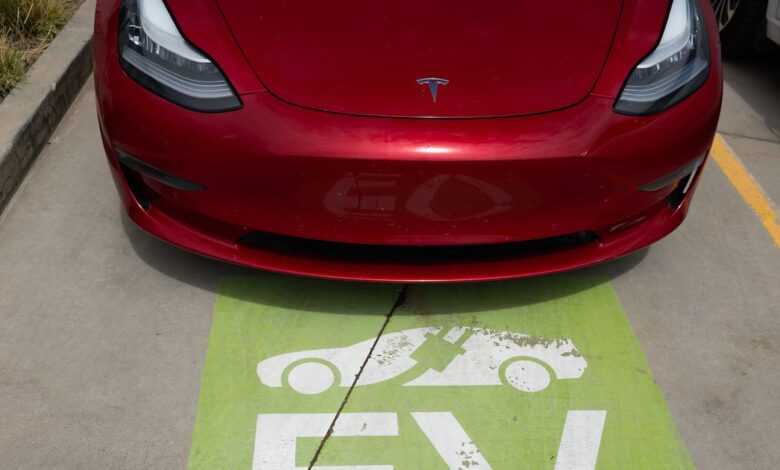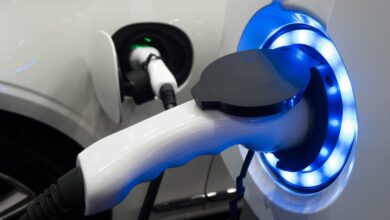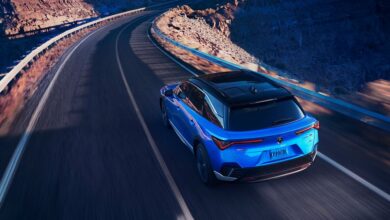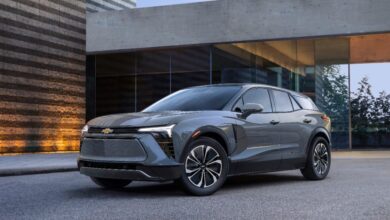Romney, other U.S. lawmakers seek to overturn EV mandate – Deseret News

Sen. Mitt Romney, R-Utah, joined a bipartisan and bicameral group of colleagues to block President Joe Biden’s electric vehicle mandates.
The response by Romney and some other lawmakers comes on the heels of new emission regulations finalized by the U.S. Environmental Protection Agency that would require up to two-thirds of new cars and nearly 40% of trucks sold in the U.S. to be electrical vehicles in eight years.
“The Biden administration continues to roll out climate regulations that may be politically attractive, but won’t put a dent in lowering global emissions,” Romney said. “These rules will not only make it burdensome for Utahns in rural parts of my state, but they will also increase the United States’ reliance on China for batteries. The administration would be wise to direct its focus on the development of new technologies which could be adopted globally.”
Romney is not the only Utah politician critical of the rule. Earlier this year, Gov. Spencer Cox was joined by other GOP governors who wanted the rule delayed.
In April, the EPA announced the “Multi-Pollutant Emissions Standards for Model Years 2027 and Later Light-Duty and Medium-Duty Vehicles,” which seeks to reduce emissions from light-duty and medium-duty vehicles starting with model year 2027 through model year 2032. In this rule, the EPA proposed multipollutant emissions standards for light-duty passenger cars and light trucks and medium-duty vehicles.
The EPA estimated that due to the rule, EVs will make up two-thirds of new vehicles by 2032, which constitutes 67% of overall vehicle production.
Romney and his colleagues assert that in 2022, electric vehicles accounted for just 5.8% of new cars sold in the United States in a statement released Thursday.
But Climate Power asserts the critics’ talking points are about as clear as the exhaust that comes out of a combustion engine’s tailpipe and stink just as much.
“The new pollution standards won’t force a single existing car off the road, mandate the sale of a single EV, or prevent anyone from buying or selling new gas-powered cars. What they will do is save the average driver $6,000 in fuel and maintenance costs per vehicle while providing $13 billion in annual public health benefits as improved air quality spares Americans from thousands of preventable hospitalizations and deaths,” the organization said in a news release issued Thursday.
Critics are not convinced of EV benefits
“President Biden’s EV mandate is delusional,” said Sen. Pete Ricketts, R-Neb. “This rule will make it harder for low income families to buy a car or rural families to get to their jobs. I promised Nebraskans I’d use every tool I have to fight this.”
Ricketts added that the bipartisan legislation will keep costs down, defend consumer choice and protect the United States against becoming more dependent on communist-controlled China.
And a GOP representative from Alaska is definitely not a fan.
“These regulations are not only disastrous for our economy, but Alaskans know well that EV technology just doesn’t work in rural states — especially those with extreme cold temperatures and communities separated by thousands of miles where reliable transportation is a matter of life and death,” said Sen. Dan Sullivan, R-Alaska. “Make no mistake, this thinly-disguised attempt to get rid of the internal-combustion engine without congressional authority will only hurt hard working families across the country, worsen the supply chain crisis, and deepen our reliance on Chinese Communist Party-controlled critical minerals.”
Cullen Hendrix at the Peterson Institute for International Economics told National Public Radio that China not only dominates much of the raw supplies, it’s also the unquestioned world leader when it comes to processing the minerals.
He had these numbers for 2022.
“China refined, you know, 95% of manganese, roughly 70% of cobalt and graphite, two-thirds of lithium, and over 60% of nickel. These are all the key materials for lithium-ion batteries that currently dominate the market,” he told the media outlet.
Climate Power shot back that to qualify for federal tax incentives, Biden invoked prohibitions on Chinese-made components and requires EVs to be assembled in North America to take advantage of that credit.
And then there is weather
Scientific American reported earlier this year that electric vehicle batteries simply cannot hold up to extreme weather, especially freezing temperatures.
The article had this to say: “A bitter cold snap in Chicago forced electric vehicle (EV) drivers to wait in line for hours at charging stations,” in January. Some drivers found themselves stranded when their battery died during that wait.
The rechargeable lithium-ion batteries that power most EVs have challenges in the cold, so scientists and carmakers around the world are busy scrambling for solutions.
“Extreme cold introduces safety risks for charging batteries,” said Paul Gasper, a staff scientist at the National Renewable Energy Laboratory’s Electrochemical Energy Storage group, as quoted in the magazine.
The Idaho National Laboratory, a couple of hours north of Salt Lake and west of Idaho Falls, has also been doing research in this area, plunging EV batteries into the depths of cold — or heat — to make them more efficient.
The promise of research
The lab is part of a multipronged effort called the ChargeX Consortium, which ropes in research from other national laboratories and industry stakeholders to improve public charging reliability and usability by June 2025.
Tanvir Tanim, a senior staff scientist at INL, said electric vehicles are equipped with battery management systems that cool or heat themselves according to temperature. The technology is rapidly evolving, but it also hinges on consumers making informed choices when they purchase a vehicle. Electric vehicle batteries operate most efficiently at a temperature range between 68 and 86 degrees Farenheit, he added.
The Idaho laboratory is a U.S. Department of Energy facility that includes a sophisticated electric vehicle battery laboratory, where employees carry out research. Researchers bake EV batteries, freeze them or subject them to other elements to determine how varying conditions affect the length of a charge. Extreme heat or extreme cold affects the life of the battery’s charge, but proper planning can prevent being stranded, Tanim said.
The extreme temperatures create an aging effect on the batteries so they don’t hold their charge as long. But Tanim pointed out that Nordic countries such as Sweden and Norway have adapted quite well to electric vehicles and have high adoption rates.
Research is ongoing to make more energy-dense batteries, he added, which boosts an electric vehicle’s range of miles it can travel before needing a charge.
“So I can also foresee a future where you will have 400- to 500-mile range vehicles,” he said. “When you start from your garage, let’s say you have 500 miles, right? In the grand scheme of things, let’s just say in the process you lost maybe 25 miles,” because the vehicle is not operating at that optimum temperate range. “It is not going to matter.”
Despite the challenges, in the move toward a carbon-free economy, Utah stands out as one of the leaders when it comes to electric vehicle purchases.
Statistics show Utah is among the top 10 states for electric vehicle purchases in the United States and outpaces the national average.
In 2023, Utah’s market share of electric vehicle registrations sat just above 8%.



